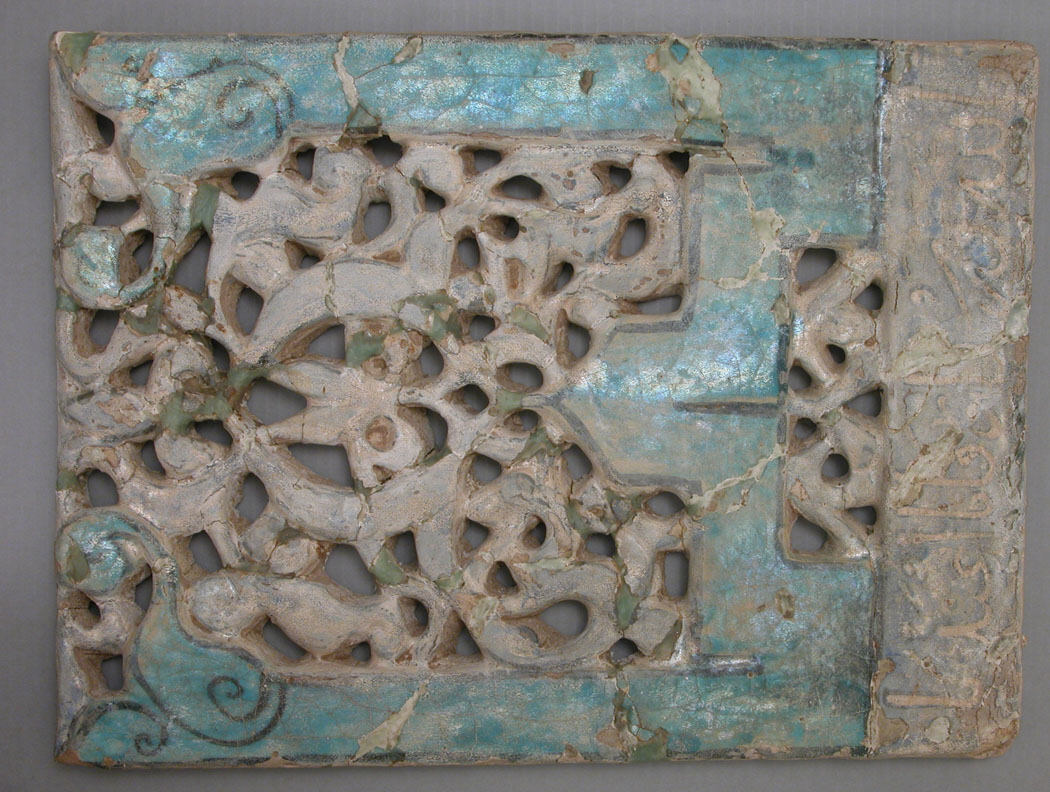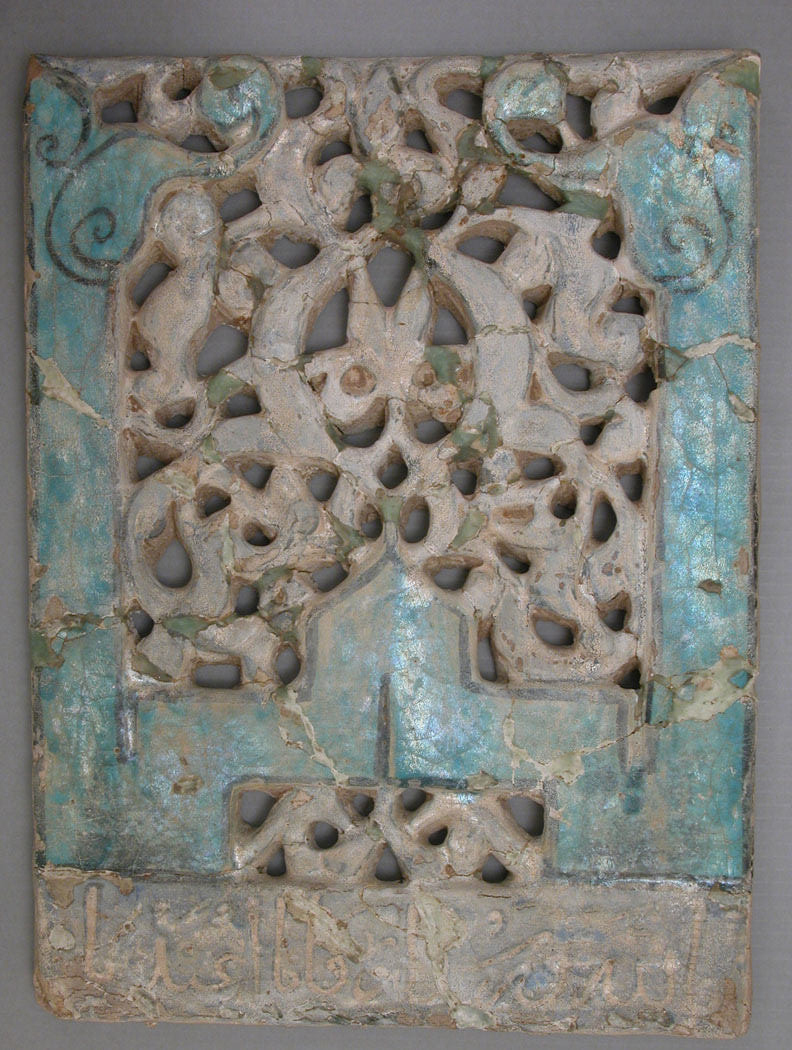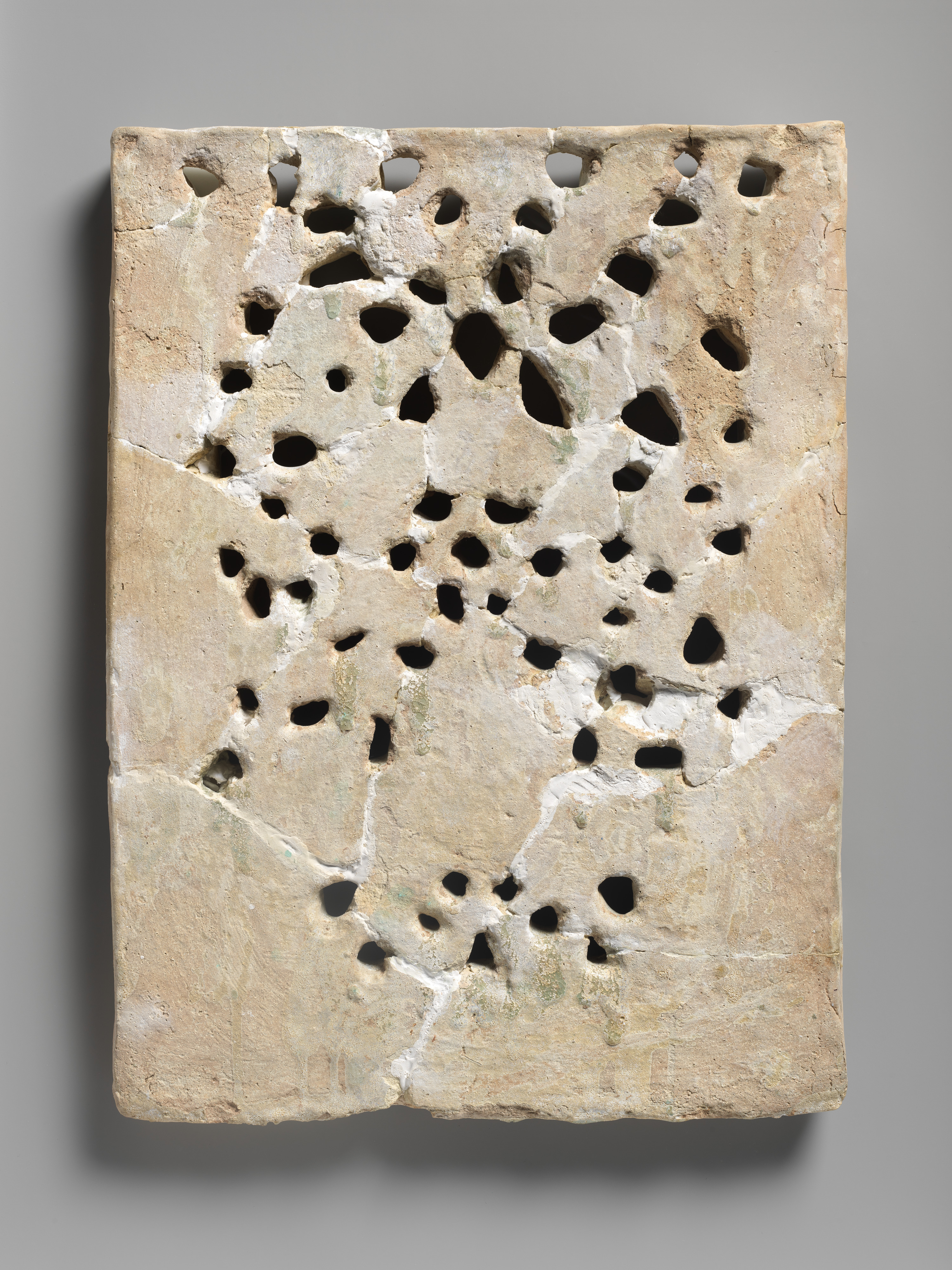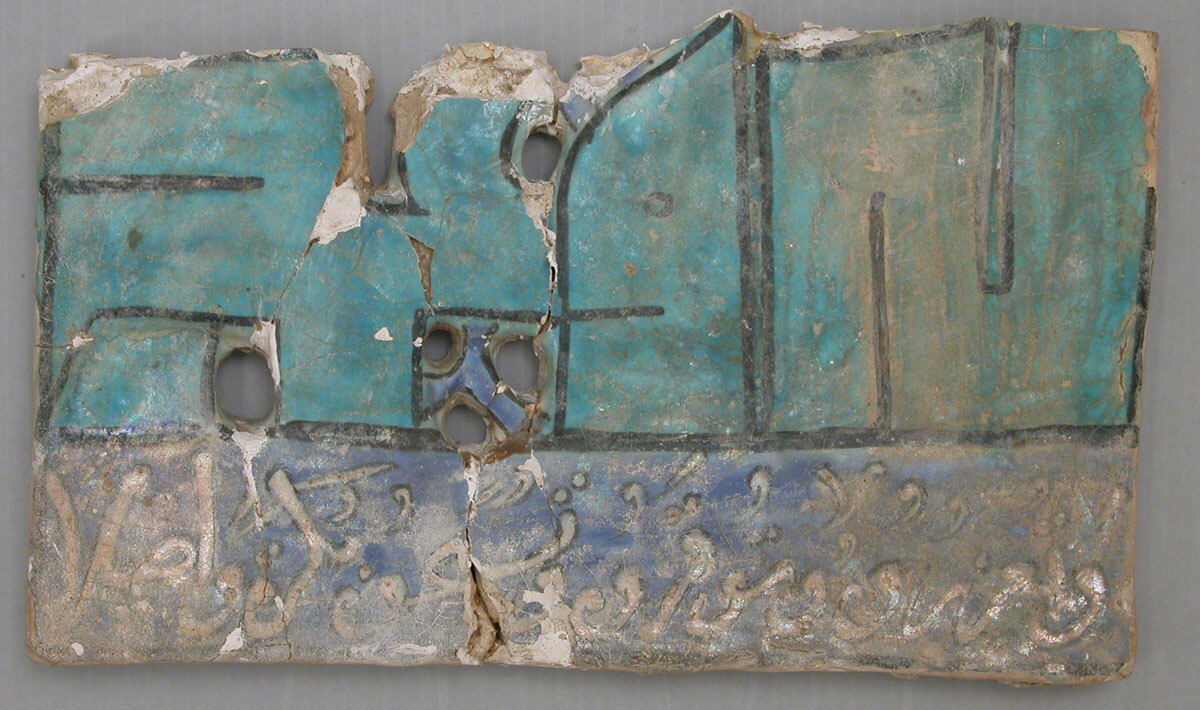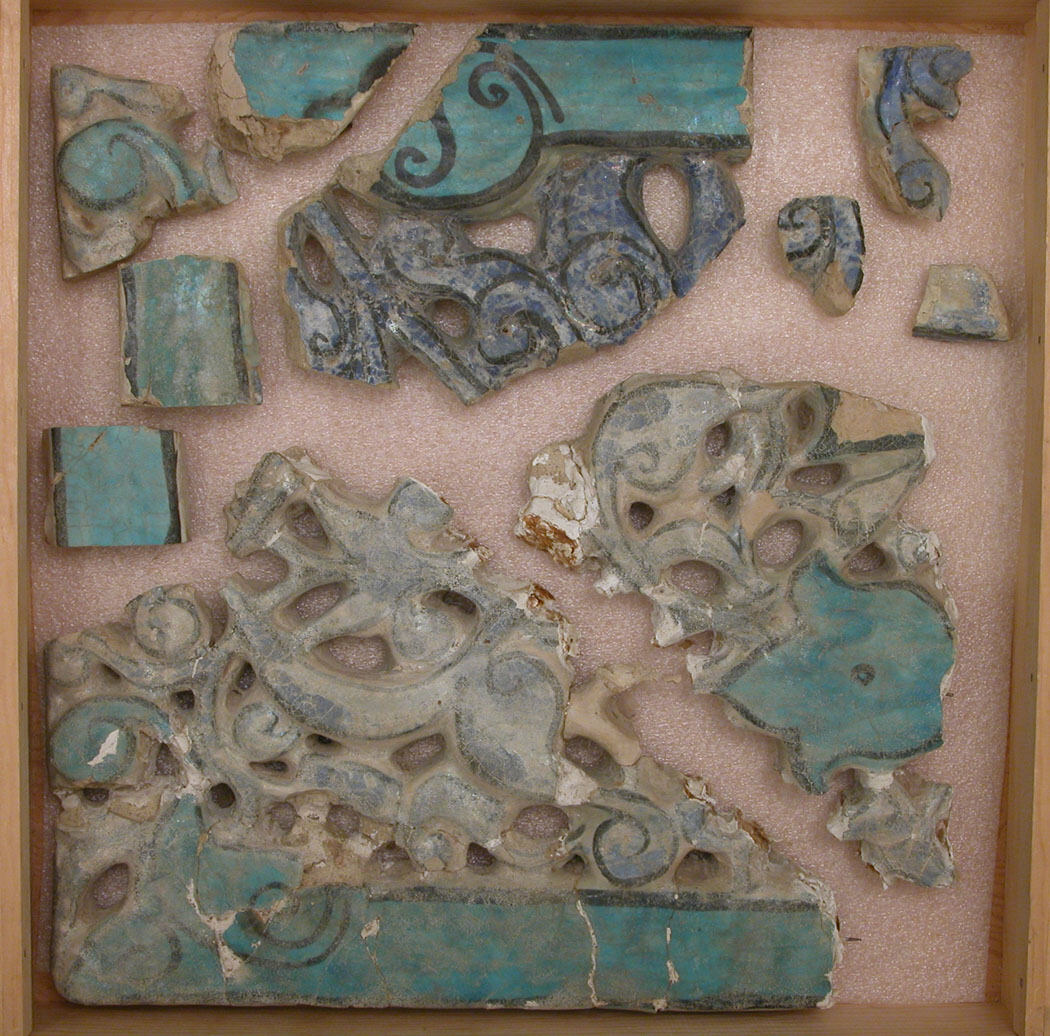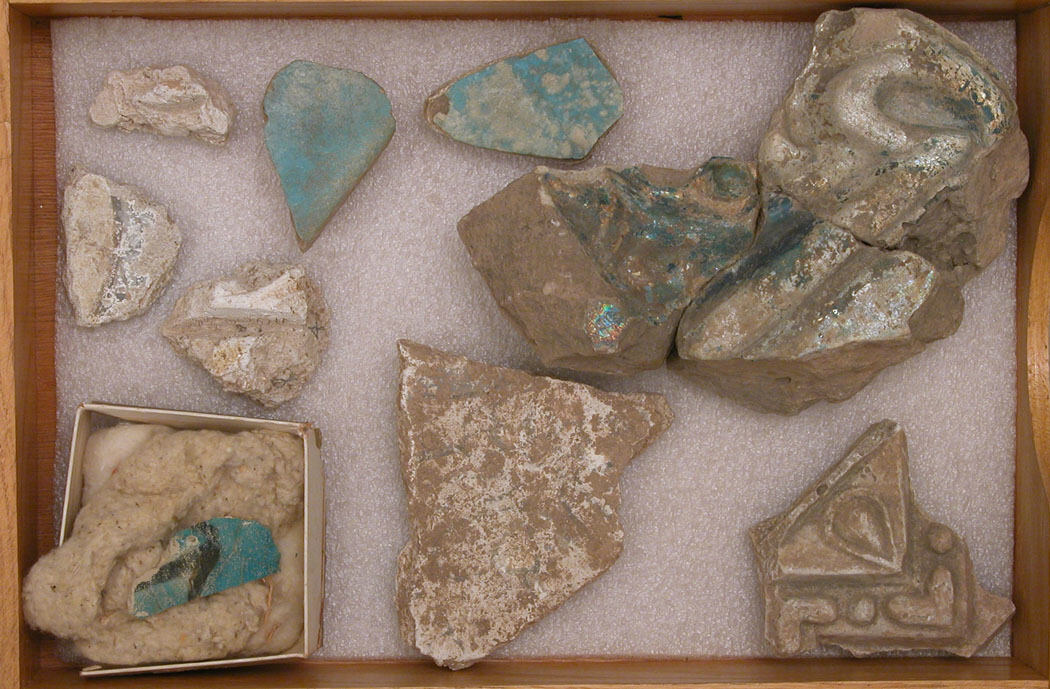Pierced Screen with Letters against a Vegetal Pattern (and Additional Fragments of a Screen)
Not on view
Ceramic tiles were used in a variety of modes in Iranian medieval architecture from the twelfth century onwards. This pierced tile functioned either as a screen to let light in a room, or to allow for the circulation of air. In the latter hypothesis, the screen was perhaps connected to a badgir (wind-tower or wind-catcher), a built-in technology employed for cooling rooms that were used in the summertime. Conducts prompted the air to circulate from an elevated external opening (often on top of a tower-like structure) to internal outlets strategically placed in the walls of rooms.
This screen may have been placed to decorate a ventilation outlet in a building in Sabz Pushan at Nishapur, where Met archaeologists uncovered it in 1937–38. The different fragments, as well as the incomplete verses from the same sura (Quranic chapter), Sura al-Fath, inscribed in the lower epigraphic bands, suggest that in the original setting several similar screens were placed in a sequence.
This image cannot be enlarged, viewed at full screen, or downloaded.
This artwork is meant to be viewed from right to left. Scroll left to view more.


